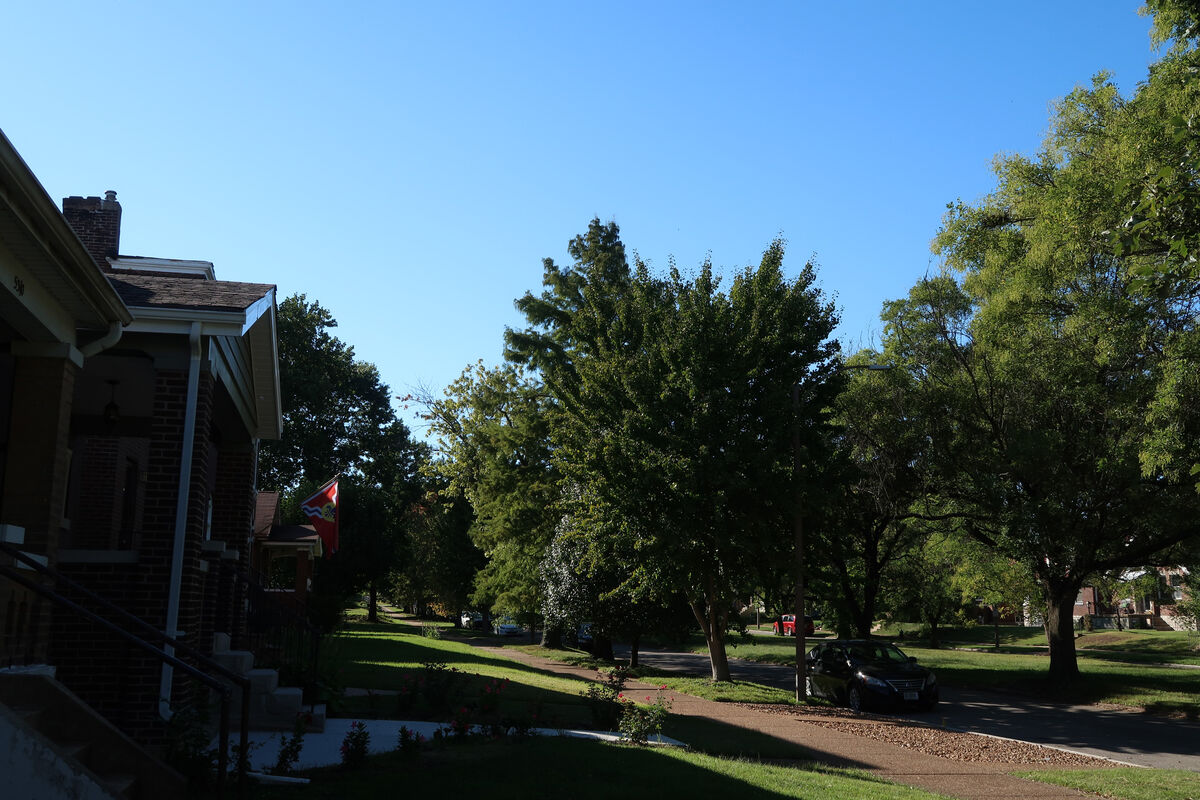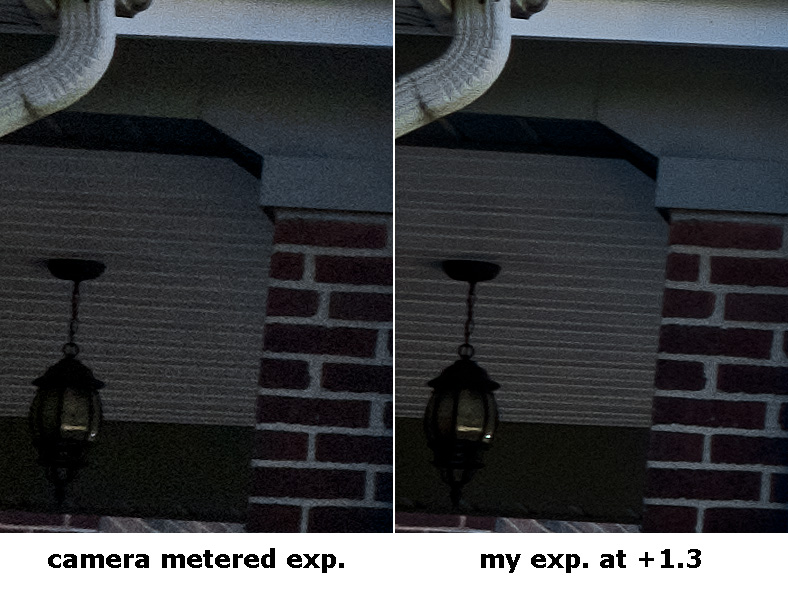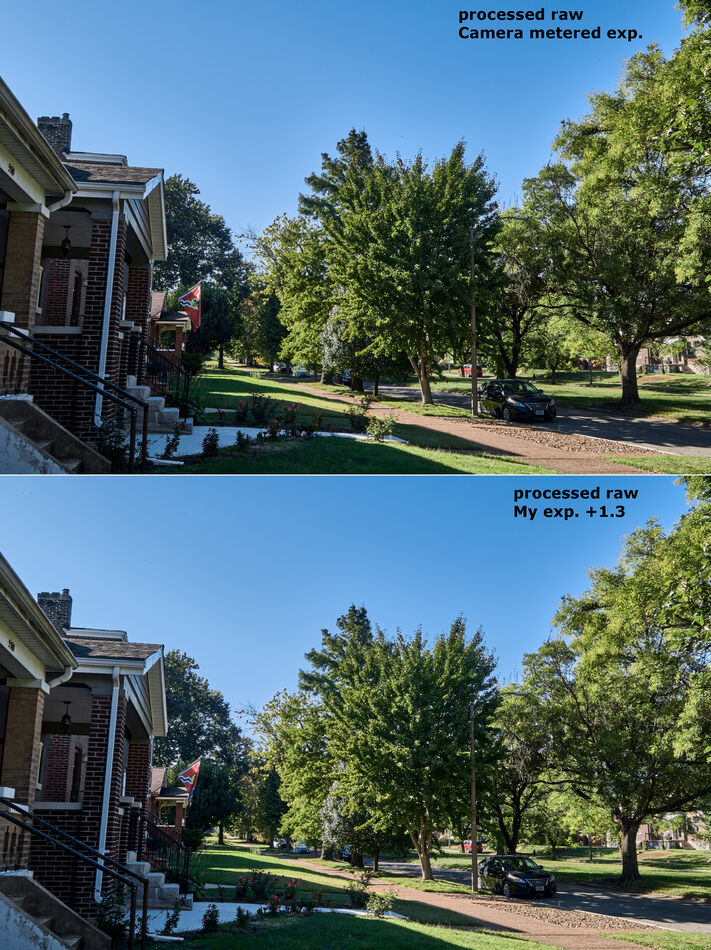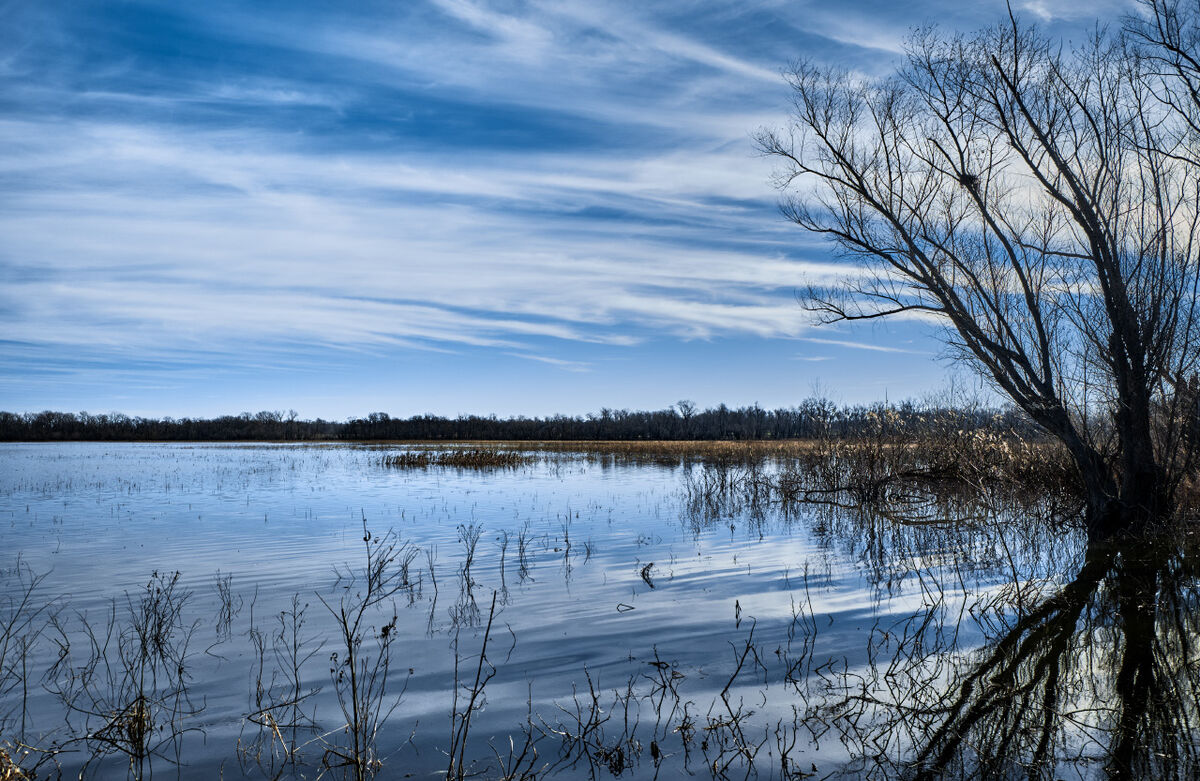What does ETTR accomplish?
Sep 24, 2022 11:22:20 #
I ran two tests to address some misconceptions about ETTR.
The first test was last night just after 6PM. I used an A7 II that is converted to monochrome. RawDigger displays only a luminance histogram because there are no color channels.

1/5000s @ f/8 ISO 400

1/4000s @ f/8 ISO 400
The first image has about 187k raw values blown out. Since the sun was too close to the frame I aimed a little more to the left and was able to increase the exposure from 1/5000s to 1/4000s. The second exposure had only 2k raw values blown out.
The Zebra stripes make it easy to maximize the exposure without blowing many raw highlights.
The image covers a 10 stop range so the result SOOC looks very dark:

Nevertheless, the shadows can be brightened to produce an acceptable image:

This example proves that the notion that an image exposed using ETTR will always look blown out.
For the second test I used a Df at around 9:26AM.

1/1600s @ f/8 ISO 400 (Sunny 16, also the exposure recommended by matrix metering) - no blown raw highlights
I was seeing no highlight warnings so I increased the exposure by one stop:

1/800s @ f/8 ISO 400 - about 1100 blown raw highlights, not enough to matter
After processing both images and converting them to B&W I ended up with:

Sunny 16/Matrix metering exposure

One stop brighter
Development consisted a little shadow recovery and B&W conversion removing some the blue and cyan. I could not remove more because the shady side of the building was lit by only the blue skylight.
What this test shows is that a one stop increase in exposure does not produce a visible improvement in the final image. It also shows that Sunny 16 and matrix metering are safe and sufficient for daylight images. And finally, it shows that the JPEG SOOC for the ETTR image, although just past the raw limit, does not look washed out:

JPEG SOOC
The first test was last night just after 6PM. I used an A7 II that is converted to monochrome. RawDigger displays only a luminance histogram because there are no color channels.

1/5000s @ f/8 ISO 400

1/4000s @ f/8 ISO 400
The first image has about 187k raw values blown out. Since the sun was too close to the frame I aimed a little more to the left and was able to increase the exposure from 1/5000s to 1/4000s. The second exposure had only 2k raw values blown out.
The Zebra stripes make it easy to maximize the exposure without blowing many raw highlights.
The image covers a 10 stop range so the result SOOC looks very dark:

Nevertheless, the shadows can be brightened to produce an acceptable image:

This example proves that the notion that an image exposed using ETTR will always look blown out.
For the second test I used a Df at around 9:26AM.

1/1600s @ f/8 ISO 400 (Sunny 16, also the exposure recommended by matrix metering) - no blown raw highlights
I was seeing no highlight warnings so I increased the exposure by one stop:

1/800s @ f/8 ISO 400 - about 1100 blown raw highlights, not enough to matter
After processing both images and converting them to B&W I ended up with:

Sunny 16/Matrix metering exposure

One stop brighter
Development consisted a little shadow recovery and B&W conversion removing some the blue and cyan. I could not remove more because the shady side of the building was lit by only the blue skylight.
What this test shows is that a one stop increase in exposure does not produce a visible improvement in the final image. It also shows that Sunny 16 and matrix metering are safe and sufficient for daylight images. And finally, it shows that the JPEG SOOC for the ETTR image, although just past the raw limit, does not look washed out:

JPEG SOOC
Sep 24, 2022 11:29:49 #
That's why I don't worry about ETTR.
Meter, shoot, review, adjust if necessary.
Meter, shoot, review, adjust if necessary.
Sep 24, 2022 11:43:20 #
Longshadow wrote:
That's why I don't worry about ETTR.
Meter, shoot, review, adjust if necessary.
Meter, shoot, review, adjust if necessary.


Sep 24, 2022 12:42:03 #
selmslie wrote:
This example proves that the notion that an image exposed using ETTR will always look blown out.
Sorry, got caught up in a double negative and meant to say, "This example disproves ..."
Anyone who posts an image showing the JPEG SOOC blown out is not being honest. If they were they would show the actual JPEG that came out of the camera with EXIF information intact.
Sep 24, 2022 14:57:03 #
selmslie wrote:
... It also shows that Sunny 16 and matrix metering are safe and sufficient for daylight images. ...
Finally some photogenic clouds at around 1PM.
All exposed at Sunny 16 (1/1600s @ f/8 ISO 400). All processed the same way as a batch.
Only one of them has any blown raw pixels. The other three are within one stop of the raw limit.
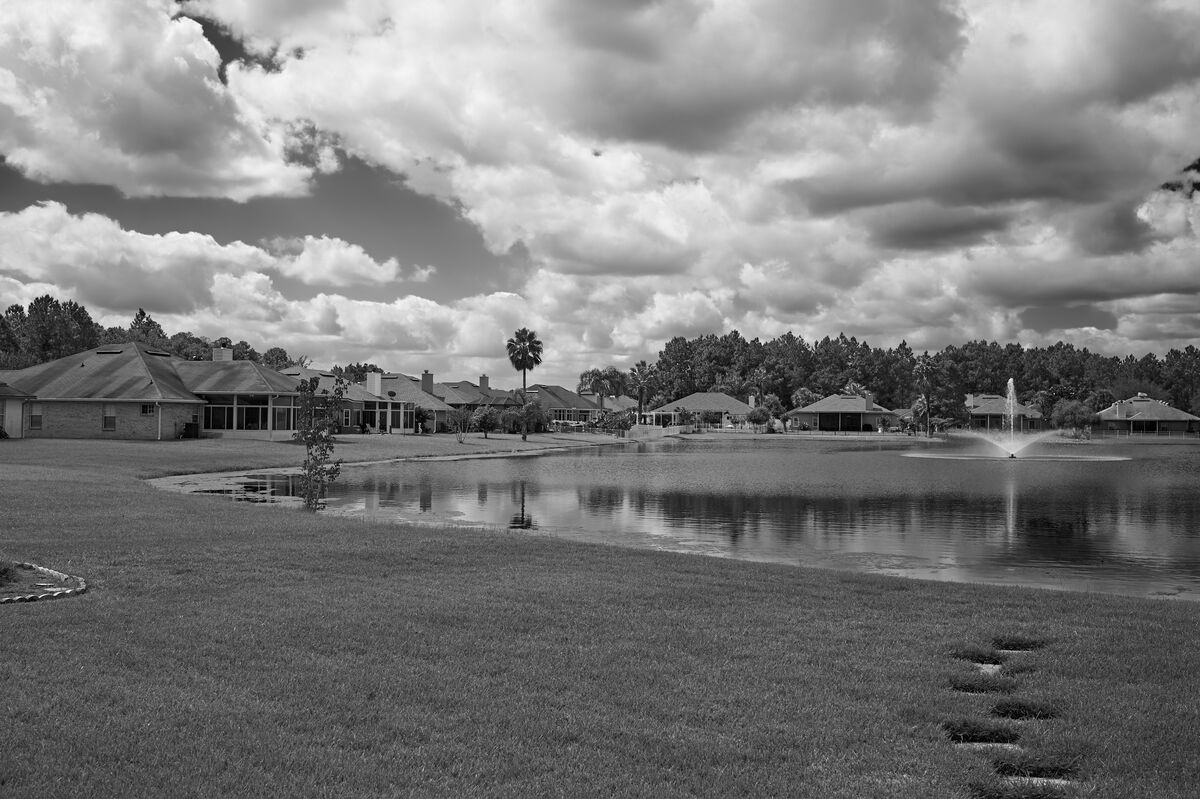
(Download)
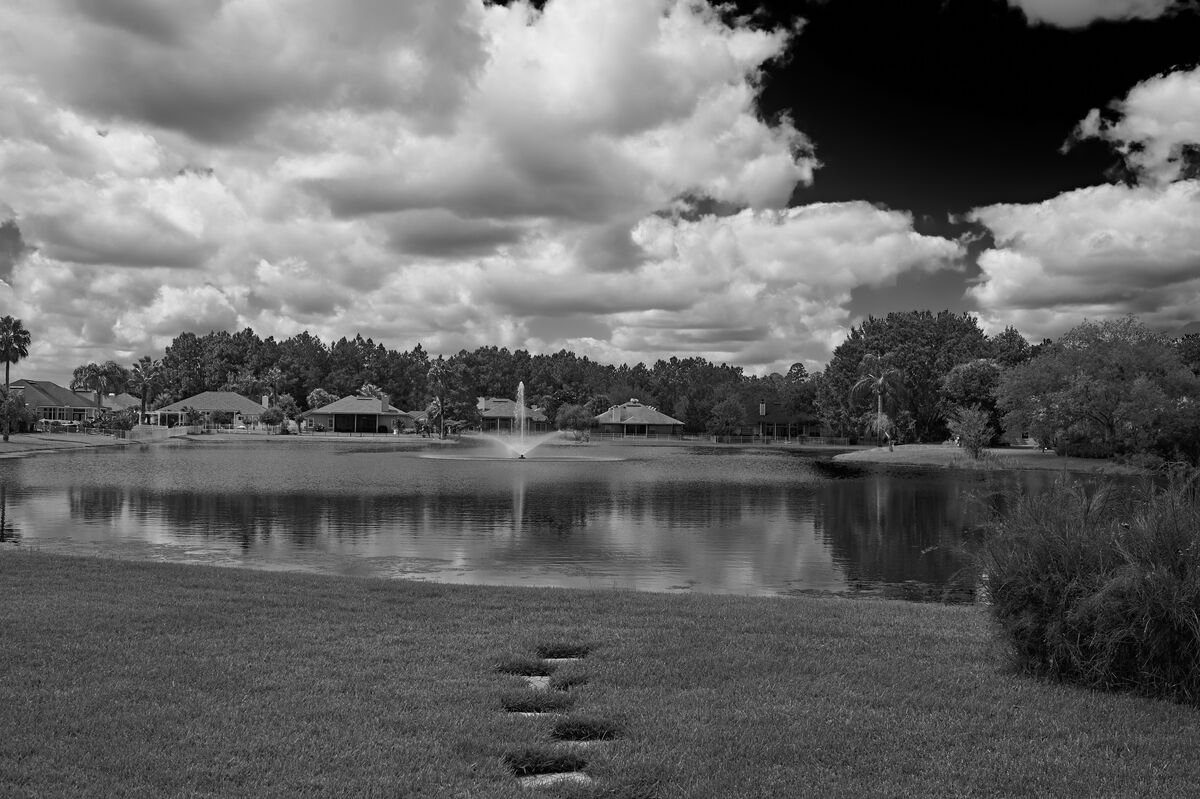
(Download)
The only one with 163 blown green raw pixels out of 16MP
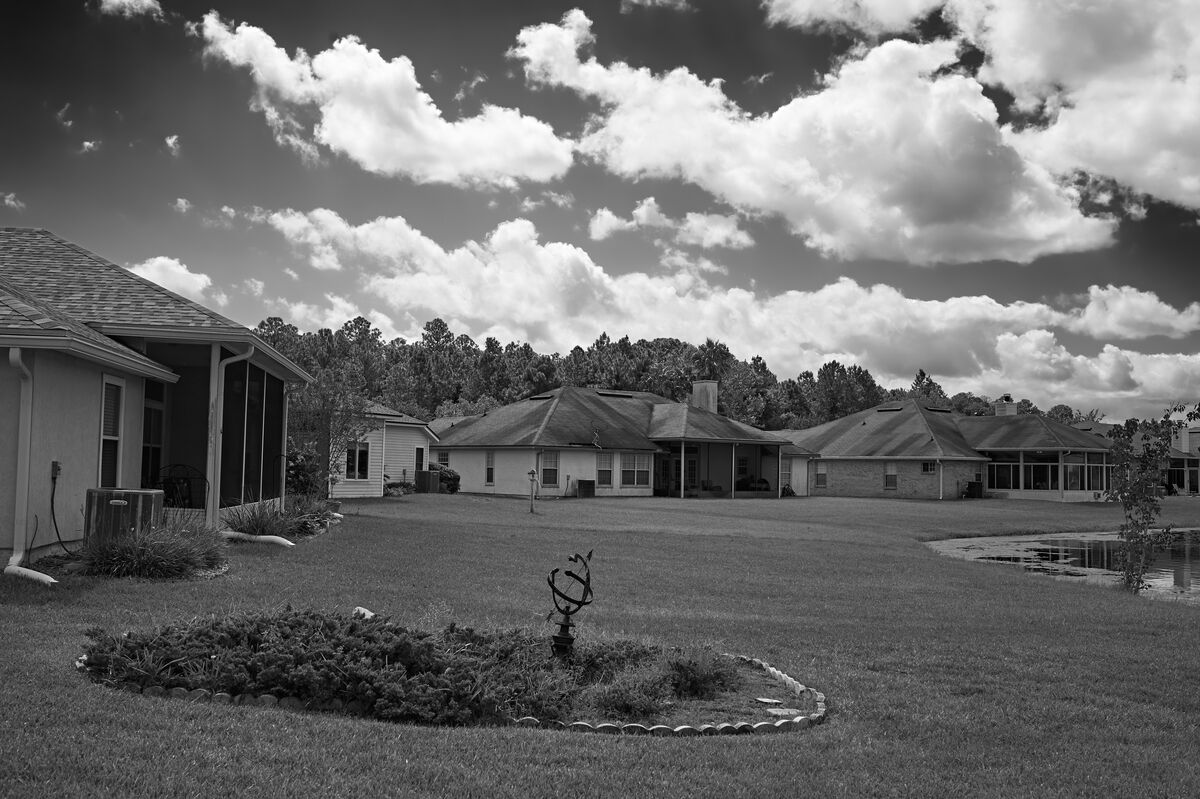
(Download)
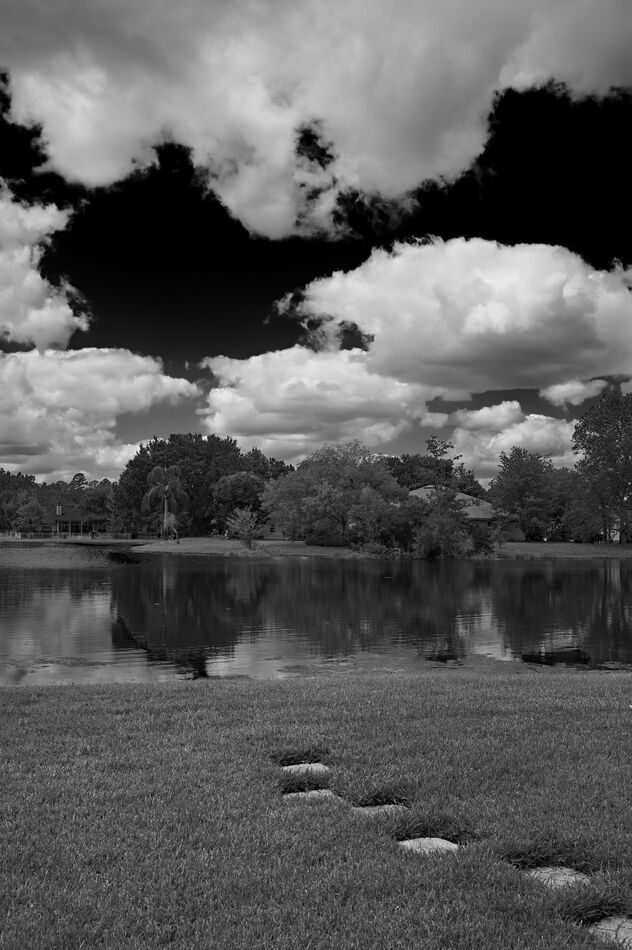
(Download)
Sep 24, 2022 15:02:47 #
selmslie wrote:
The only one with 163 blown green raw pixels out of 16MP
For the record, I usually expose 1/3 stop darker than Sunny 16 in broad daylight. At 1/2000s there would have been no blown raw pixels.
For more information see: Light Value (LV) 15
Sep 24, 2022 16:24:57 #
selmslie wrote:
For the record, I usually expose 1/3 stop darker than Sunny 16 in broad daylight. At 1/2000s there would have been no blown raw pixels.
For more information see: Light Value (LV) 15
For more information see: Light Value (LV) 15
Sounds good to me!
Sep 24, 2022 18:49:11 #
Ysarex
Loc: St. Louis
selmslie wrote:
What does ETTR accomplish?
The goal of ETTR is to increase/maximize raw file exposure.
Which begs the question compared with what? The answer is the exposure the camera metering system selects to create the camera JPEG. ETTR as an acronym references an image histogram and means Expose To The Right -- expose to cause the histogram to shift right compared with the exposure the camera selected for the JPEG.
There's a tacit assumption in place for folks who practice ETTR: The camera engineers have designed some headroom or highlight protection into their systems such that the exposure that creates the camera-metered JPEG doesn't fully utilize the recording capacity of the sensor/raw file. That's a fair assumption for most of our cameras with the caveat that each camera brand/model is going to differ one to the next in this regard with some leaving more headroom and others less. Careful testing then of the specific camera hardware is essential.
Now we can answer the question in the thread title: What does ETTR accomplish? Answer: improved SNR. Signal to Noise Ratio is tied to exposure such that more exposure improves SNR and vice versa. Consequently DR is noise limited and so ETTR is also improving DR under the specific exposure circumstance.
selmslie wrote:
As a blanket unqualified statement that's false if you're trying to suggest it applies to other/all ETTR photographs. Your test showed that a one stop increase in exposure didn't produce a visible improvement in the specific image you took given the way that you chose to process it and use it. It's ridiculous to think that one size fits all here. A one stop exposure increase unquestionably improves SNR and under different conditions with different hardware it may be enough to make a visible difference. That's a call each photographer gets to make for themselves.What this test shows is that a one stop increase in exposure does not produce a visible improvement in the final image.
Sep 24, 2022 19:09:38 #
Ysarex wrote:
Now we can answer the question in the thread title: What does ETTR accomplish? Answer: improved SNR.
That begs the question, how much do we need to improve it? If we can't see any noise there is nothing we can do to make it less visible.
All of the images in these tests were shot at ISO 400. If I had used ISO 100 and 4x as much exposure would you have been able to see the difference? As it stands, nobody can see any reduction in noise from increasing the exposure by 2x so what would 4x have done?
In the examples I posted (broad daylight) none of the scenes could have been shot much closer to the raw limit than they were. A rigorous application of ETTR would have made little or no real or visible difference.
Ysarex wrote:
A one stop exposure increase unquestionably improves SNR and under different conditions with different hardware it may be enough to make a visible difference.
I cannot conceive of a case where one stop of additional exposure can produce enough of a change in SNR for it to be seen. Can you?
There is simply no benefit from the application of ETTR that we can't achieve from being careful to not blow the highlights. And above all, it's useless in broad daylight.
Sep 24, 2022 19:26:56 #
selmslie wrote:
I cannot conceive of a case where one stop of additional exposure can produce enough of a change in SNR for it to be seen. Can you?
There is simply no benefit from the application of ETTR that we can't achieve from being careful to not blow the highlights. And above all, it's useless in broad daylight.
There is simply no benefit from the application of ETTR that we can't achieve from being careful to not blow the highlights. And above all, it's useless in broad daylight.
BUT, for people following a certain procedure KNOW it is improved,
whether they can see it or not, they know.

Sep 24, 2022 20:17:47 #
Longshadow wrote:
BUT, for people following a certain procedure KNOW it is improved,
whether they can see it or not, they know.
whether they can see it or not, they know.

They’re usually in a minority of one.

Sep 24, 2022 20:33:06 #
selmslie wrote:
They’re usually in a minority of one. 

Well, it floats their boat.

Sep 24, 2022 20:59:49 #
Sep 24, 2022 21:52:46 #
Ysarex
Loc: St. Louis
selmslie wrote:
That begs the question, how much do we need to improve it?
Is there something wrong with as good as possible? Especially since it's not a tradeoff with a down side.
selmslie wrote:
I cannot conceive of a case where one stop of additional exposure can produce enough of a change in SNR for it to be seen. Can you?
Absolutely, and I encounter it often enough.
Here's a photo I just took in broad daylight. First image below you see the camera SOOC JPEG (1/2 res for display) -- exposure was metered and set by the camera (base ISO - 125, f/5.6, 1/640 sec. EC = 0).
I then set an exposure to fully utilize the camera sensor. (base ISO - 125, f/5.6, 1/200 sec. EC = +1.3).
Next image is cropped shadow detail at 100% and the noise difference is obviously visible and so you are obviously wrong. If you can't see that noise difference you're blind. And let me repeat; Is there something wrong with as good as possible?
The next two images are the two processed raw files at 50% resolution and I can see the noise difference in the shadows even at 50% res.
It depends on what the photographer wants to achieve and with what tools. Your blanket unqualified statements are wrong. Not everyone takes the same photos you do in the same way and that's OK. You don't dictate everyone's photographic practice. I like to take backlit photos like the last photo below. In scenes with that much contrast I want as much SNR and DR as I can get because I often lift the shadows. It's OK for me to want to do that and in those cases a stop more exposure definitely makes a visible difference.
Sep 24, 2022 22:10:12 #
Ysarex wrote:
Is there something wrong with as good as possible? Especially since it's not a tradeoff with a down side.
Not in the slightest.
That's why a friend of mine spent two weeks sanding the wood floor in his living room. He wanted it to be as good as possible.
If you want to reply, then register here. Registration is free and your account is created instantly, so you can post right away.




